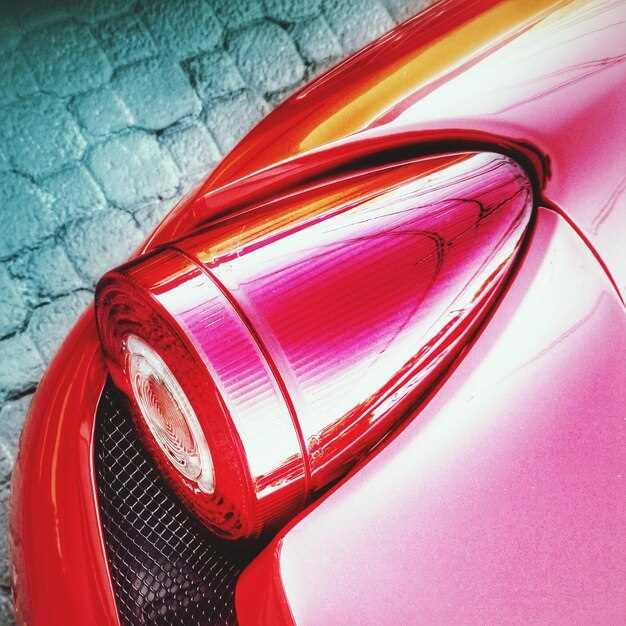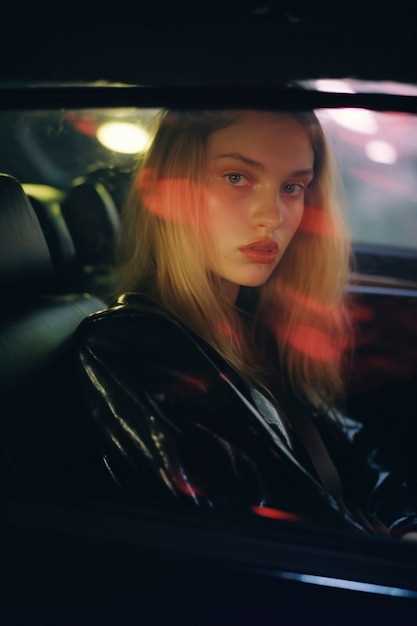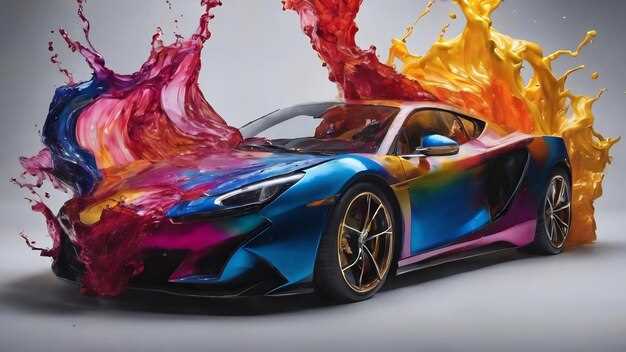
Color is an essential element in automotive photography that goes beyond mere aesthetic appeal. It plays a pivotal role in setting the mood, evoking emotions, and shaping the viewer’s perception of a vehicle. Whether it’s the striking red of a sports car or the sleek black of a luxury sedan, color influences how images are interpreted and what feelings they provoke. Understanding the psychological effects of different colors can greatly enhance the impact of automotive photographs.
Utilizing color effectively can transform a mundane car image into a compelling visual story. Every hue carries specific connotations; for example, blue often signifies trust and reliability, while yellow can evoke feelings of happiness and energy. Photographers must consider these associations when capturing images, as the right color can create a strong connection between the viewer and the vehicle, enhancing its desirability and appeal.
Moreover, the impact of color is not just limited to the vehicles themselves but extends to the backgrounds, lighting, and overall composition of the photograph. By harmonizing these elements, photographers can create dynamic images that resonate with their audience. The interplay of color within automotive photography is a critical aspect that can either elevate a photograph or diminish its effectiveness, making it crucial for photographers to master this art.
Choosing the Right Color Palette for Different Vehicle Types
Selecting an appropriate color palette is essential in automotive photography as it profoundly affects the perception and expression of vehicles. Different vehicle types resonate with different shades, making the choice of color crucial in conveying the intended message.
Sports Cars: For high-performance sports cars, vibrant colors like red, yellow, or electric blue signify speed and agility. These hues evoke excitement and draw attention, enhancing the vehicle’s dynamic character. Utilizing a glossy finish can amplify their sporty appeal, accentuating lines and curves.
SUVs and Trucks: Meanwhile, SUVs and trucks often benefit from earthy and robust colors such as deep green, navy blue, or matte black. These tones reflect strength and resilience, appealing to buyers who prioritize durability and off-road capabilities. Neutral color palettes can also suggest versatility, making these vehicles more approachable.
Luxury Cars: In the realm of luxury vehicles, a refined palette featuring metallic shades like silver, gold, or deep burgundy exudes sophistication. These colors resonate with elegance and exclusivity, often accompanied by high-end finishes that enhance the vehicle’s luxurious aura.
Electric Vehicles: Electric vehicles (EVs) can leverage innovative colors like bright white, soft pastels, or even futuristic hues such as teal or lime green. These selections suggest modernity and eco-friendliness, aligning with the sustainable ethos that many EV buyers value.
Choosing the right color palette thus transcends mere aesthetic pleasure; it encapsulates the vehicle’s identity and influences consumer perception. By understanding the inherent associations tied to specific colors, automotive photographers can effectively convey the desired expression of each vehicle type.
Utilizing Lighting Techniques to Enhance Color in Car Photography

Effective lighting is crucial in automotive photography, as it profoundly influences the expression and vibrancy of colors in a car’s design. Understanding and manipulating natural and artificial light can significantly enhance the visual appeal of the vehicle being photographed.
Natural light is one of the most accessible tools for photographers. Shooting during the golden hour, shortly after sunrise or before sunset, can impart a warm glow to the car, enriching its color palette. The low angle of the sun creates soft shadows and highlights, allowing for a three-dimensional representation of the car’s surfaces. Photographers should position the vehicle to maximize exposure to this light, accentuating its curves and lines.
Conversely, artificial lighting offers controlled conditions that can emphasize specific aspects of a car’s color. Using softboxes or LED panels can help diffuse light, eliminating harsh shadows while enhancing the richness of the hues. This technique is particularly effective in studio settings, where photographers can manipulate the light source to create dramatic effects, drawing attention to particular features like the paint finish or the interior details.
Moreover, incorporating colored gels over lights can introduce an exciting twist to the color expression in car photography. By using complimentary or contrasting colors, photographers can evoke different moods and highlight various attributes of the car. For example, a blue gel can add a dynamic contrast to a red car, making the overall image more striking and memorable.
Additionally, reflecting surfaces, such as chrome accents, can play a key role in the interplay of light and color. Positioning the car near reflective surfaces can create interesting light dynamics, further accentuating the vehicle’s color and adding depth to the photograph. Reflections can act as an additional layer, enhancing the overall aesthetic while providing context and environment.
In conclusion, mastering lighting techniques is essential for any automotive photographer aiming to enhance color in their shots. By effectively utilizing both natural and artificial light, along with creative tools like colored gels and reflective surfaces, photographers can elevate the color expression in their images, resulting in captivating and visually stunning photographs.
Post-Processing Tips for Color Correction and Enhancement

Post-processing is an essential step in automotive photography that allows photographers to elevate their work through color correction and enhancement. One of the first steps is achieving accurate white balance. Adjust the temperature and tint sliders to remove any color casts caused by artificial lighting or reflective surfaces. This ensures that the true color of the car is represented, allowing for a more authentic expression of the vehicle’s design.
Next, utilize curves and levels to enhance the overall contrast. By adjusting the tonal range, you can bring out the richness of the car’s colors. Make pinpoint adjustments to the RGB curves to selectively enhance specific hues without affecting others. This technique can dramatically improve the vibrancy of the paint job while maintaining the integrity of shadows and highlights.
Color saturation is another crucial aspect of post-processing. Increase the saturation or vibrance to make the vehicle pop, but exercise caution to avoid unnatural results. A targeted approach can help emphasize specific colors, enhancing the car’s appeal without overwhelming the viewer. This serves to create a balance between reality and artistic expression.
Moreover, consider local adjustments using layer masks or selections. Focus on specific areas that require enhancement, such as the headlights or chrome accents. This method allows for precise control and can dramatically improve the overall visual impact. By applying selective sharpening and slight saturation boosts, you can draw attention to key features.
Lastly, always compare your edited images to the original. This helps ensure that your post-processing enhances the vehicle’s true colors rather than altering them significantly. Regularly revisiting the original can help maintain a sense of authenticity in your work, ensuring that the expression of the car remains true to life while still being artistically vibrant.




